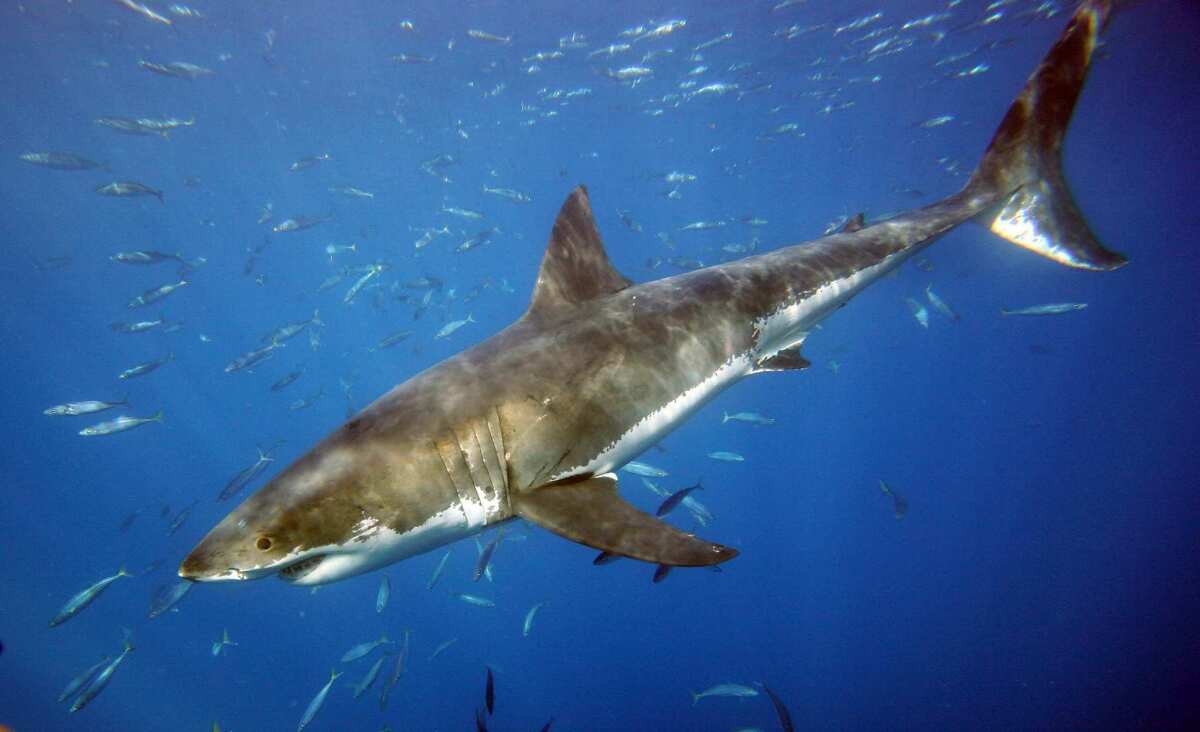Agency says Pacific great white shark not in danger of extinction

The National Oceanic and Atmospheric Administration announced Friday that the northeastern Pacific Ocean population of great white sharks is not in danger of extinction and does not warrant listing under the Endangered Species Act.
NOAA had been researching the health of the great white population since last year, when the environmental groups Oceana, Shark Stewards and the Center for Biological Diversity filed a petition calling for endangered species protection.
The petitioners were reacting to the first census of great whites ever attempted. Conducted by UC Davis and Stanford University researchers, and published in the journal Biology Letters in 2011, the census estimated that only 219 adult and sub-adult great whites lived off the Central California coast, and perhaps double that many were in the entire northeastern Pacific Ocean, including Southern California.
“We are disappointed and feel this is the wrong decision, one that flies in the face of best available science,” said Geoff Shester, Oceana’s California program director. “This battle is far from over.”
NOAA scientists concluded that the white shark population is a distinct genetic group with a low to very low risk of extinction now and in the foreseeable future.
“Our team felt that there were more than 200 mature females alone, an indication of a total population of at least 3,000,” Heidi Dewar, a fisheries research biologist at NOAA, said in an interview.
NOAA’s analysis, which will be made public Monday, was based on a comprehensive review of threats to the population, direct and indirect indicators of abundance trends and analysis of fisheries by catch in the United States and Mexico, Dewar said.
Some of the data reviewed by NOAA was provided by the Monterey Bay Aquarium, which was encouraged by the results.
“We will continue this work so we can gain a better understanding of population trends and the overall health of sharks that play a vital role in ocean health,” said Margaret Spring, vice president of conservation and science at the aquarium.
Chris Lowe, a professor of marine biology at Cal State Long Beach who has been conducting state and federally permitted white shark research since 2002, said NOAA’s findings confirm his own conclusion: The white shark population is rebounding for reasons that include federal laws that curb pollution, ban near-shore gill netting, protect sharks and halt the slaughter of marine mammals that sharks prey on for food.
The state Department of Fish and Wildlife later this year is expected to announce its own determination of the status of the great white population.
George H. Burgess, curator of the Florida Museum of Natural History’s International Shark Attack File, is among nine scientists who recently completed an independent census that will show there are more than 2,000 adult and sub-adult white sharks off Central California.
That study was not submitted for review by NOAA until after it reached its conclusion, Dewar said.
More to Read
Start your day right
Sign up for Essential California for news, features and recommendations from the L.A. Times and beyond in your inbox six days a week.
You may occasionally receive promotional content from the Los Angeles Times.







